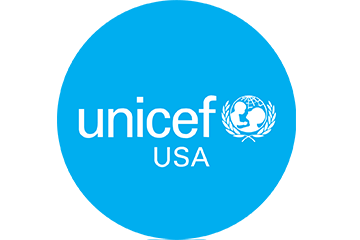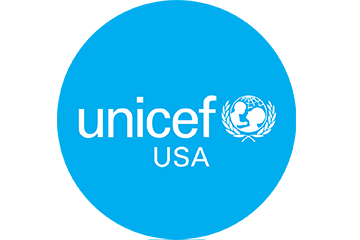There are 240 million children with disabilities worldwide at risk of being left behind, according to UNICEF’s latest research. That’s more than double some previous global estimates.
The updated figure reflects increased awareness, knowledge and data availability — and a broader understanding of what it means to be disabled, which has come to include functional difficulties such as anxiety and depression.
In a recent report, entitled Seen, Counted, Included: Using data to shed light on the well-being of children with disabilities, UNICEF provides the most detailed portrait yet of children with disabilities — one that considers the nature and severity of impairments and how disabilities shape experiences. The report examines 60 indicators of child well-being — nutrition, health, water and sanitation, education and protection, among others — across 42 countries where UNICEF works.
Armed with a more nuanced view going forward, UNICEF hopes to drive more effective country action toward dismantling those barriers so that children with disabilities have equal opportunities to participate in society and to thrive.
Moaz, 14, of Douma, east Ghouta, Syria, lost his right leg four years ago in a blast at a market where he had been shopping for food. Moaz attends catch-up classes supported by UNICEF to make up for the years of education he missed — not because of his injury but because of the intense fighting in the area, which still shows the scars of war. Read the full story. © UNICEF Syria/Hasan Belal
Stigma, discrimination, poor access to services — what life is like for children with disabilities
Children with disabilities are among the most marginalized and excluded members of society. They often experience stigma and discrimination. Many countries lack adequate policies and legislation that specifically protect the rights of disabled children, and as a result, many are unable to realize those rights.
Compared to children without disabilities, children with disabilities are more likely to be undernourished, and are at higher risk of being stunted or wasted. They often have limited access to even routine medical services. They are disproportionately likely to live in poverty, and are often hidden from their communities, especially if their families lack the resources to meet their special needs. Only a small fraction (5 to 15 percent) of those who need assistive technology can access it.
They face heightened risks of violence, abuse, neglect and exploitation. Half are out of school.
Rasha, 11, at home studying in Safira village, southeastern rural Aleppo, Syria. Rasha, whose disability requires the use of a wheelchair, is able to attend school and otherwise carry on with support from UNICEF. “Nothing will stop me from going to school — not even the stairs that I can’t climb by myself nor the bumpy road to school,” she says. Read the full story. © UNICEF/Syria/2020/Antwan Chnkdji
How UNICEF delivers for children with disabiities
Delivering for children with disabilities is not a new priority for UNICEF, and has only gained momentum since the Convention on the Rights of the Child was adopted in 1989 (and since signed by 196 countries). An integral part of UNICEF’s mission, UNICEF works to protect and promote the rights and well-being of persons with disabilities at every level of society and development, and to raise awareness of their situation in all aspects of political, social, economic and cultural life.
After assessing the extent to which children with disabilities are deprived, feel discriminated against and lack hope for the future, UNICEF concludes in the Seen, Counted report that societies are not doing enough to realize their most basic human rights; that the vicious cycle of exclusion and disadvantage that leaves children with disabilities behind continues.
As an important component of UNICEF’s child protection programming, UNICEF is focusing on creating opportunities for leadership and participation for children and young people with disabilities. These opportunities are central to UNICEF’s vision for an inclusive, accessible and sustainable post-COVID-19 world.
Sandra from UNICEF Syria interviews Moaz, 14, of Douma, Syria, during a virtual field visit. He is one of 1,700 young people with disabilities in rural Damascus who are receiving services and support with help from a UNICEF case worker. Moaz has become well-known in his rural community for his electrical work repairing broken light fixtures at home to earn extra income for his family. © UNICEF Syria
In 2020, UNICEF inclusion programs reached 2.2 million children with disabilities across 144 countries
In 2020, UNICEF disability-inclusive development and humanitarian programs reached 2.2 million children with disabilities across 144 countries. Although the pandemic piled on additional challenges for children with disabilities and their families, it also presented a unique opportunity to address longstanding systemic inequalities in education, such as the enhancement of accessible digital learning materials.
Other results in 2020 include providing over 152,000 children with disabilities with assistive devices, inclusive products and emergency kits; helping 48 countries improve their social protection systems; and accounting for the needs of children with disabilities and their families as part of 28 emergency response plans.
UNICEF works with partners in individual countries to:
- improve early detection and early intervention for children with disabilities and their families and increase their access to health services and support
- break the link between disability, poverty and marginalization by making social protection systems and social spending more supportive of inclusion of the diversity of children with disabilities and their families in their communities through integrated packages of cash transfers and services
- make education from early childhood through secondary school more accessible and inclusive; this involves training teachers and providing accessible infrastructure, recreational spaces, water and sanitation facilities, and transportation, among other forms of support
It is not enough for children with disabilities to simply attend school; if schools cannot respond to their needs and support their growth, children with disabilities will not benefit from education and their rights will continue to be denied.
UNICEF calls on governments to provide children with disabilities with equal opportunities and to ensure that critical social services are inclusive and accessible — everywhere, all the time. This includes mental health and psychosocial support and protection against violence, abuse and neglect.
UNICEF also advocates for disability-inclusive policies and legislation; greater investments in evidence-based, multi-level strategies to address negative attitudes toward persons with disabilities and policies that combat stigma and discrimination. UNICEF also works to empower children, families and communities to inspire positive social and behavioral change — and to ensure that children and young people with disabilities are counted, consulted and considered in decision making.
Reaching children with disabilities in Syria
At the country level, UNICEF takes an integrated approach to providing services for children with disabilities, through regular cash assistance coupled with one-on-one support from a case manager. That case manager regularly visits the child’s home to assess needs, connect them with services and help facilitate their inclusion in their community.
In Syria, for example, UNICEF has reached over 25,0000 children with disabilities since 2016, including children with cerebral palsy, intellectual disabilities, paraplegia and monoplegia.
Children and families also receive direct support from UNICEF in the form of a small but regular cash grant (equivalent to about $40 per month). As people in Syria increasingly face widespread social and economic hardship, the cash grants are a lifeline to help highly vulnerable families pay for the basic needs of their children with disabilities, such as education, health care and other household essentials like food.
Above, a still from the footage captured during a virtual field visit arranged by UNICEF Syria. At right: 11-year-old Bara’a, a quadraplegic, with her mother, left, and Kholoud, her UNICEF case manager, center. In Syria, delivering services and support to children with disabilities and their families in need is complicated by the country’s triple emergency: years of conflict, socio-economic collapse and now COVID-19. © UNICEF Syria
During a recent field visit — conducted virtually — members of UNICEF’s Syria country office met with Bara’a, an 11-year-old girl who is quadraplegic, at her home, camera crew in tow. Bara’a smiled from her seat on the sofa as her case manager and a UNICEF communications specialist poured over a sketchbook filled with her artwork.
UNICEF’s support enables Bara’a mother to pay for clothes, food, medicine and basic art supplies. Bara’a is also enrolled in a computer course and dreams of becoming a mathematician.
When Bara’a is drawing, “she is less anxious and she forgets about any limitations caused by her disability,” her mother says. “I see her happy. When she is happy, I am happy.”
With help from her UNICEF case manager, Bara’a has also received treatment for malnutrition, psychosocial support, physiotherapy and care from an orthopedic surgeon. Her medical needs are extensive.
Building a world where children with disabilities reach their full potential
UNICEF’s vision is to build a world where children and youth with disabilities reach their full potential — growing up healthy, educated, protected from harm, heard and engaged in their communities. UNICEF works every day, all around the world, to make this vision a reality — to ensure that children with disabilities and their families have access to community-based services and support, wherever they may live, in times of stability and during humanitarian emergencies; that most vulnerable and marginalized children are not left behind, but are instead participating and leading in their schools and communities.
To learn more, read Seen, Counted, Included: Using data to shed light on the well-being of children with disabilities, the November 2021 report by UNICEF’s Division of Data, Analytics, Planning and Monitoring.
Get involved: Check out UNICEF’s Voices of Youth website and plans for the upcoming Global Disability Summit.
Help UNICEF protect, include and empower children and youth with disabilities. Your support can make a difference. Donate today.
Top photo: A home visit with 11-year-old Bara’a of Douma, Ghouta, a rural area outside Damascus, Syria, that has been devastated by conflict. Bara’a was born a quadriplegic. Despite her disability, she is able to draw and dreams of becoming a mathematician. Support from UNICEF allows Bara’a to continue with her education and helps the family financially. Bara’a’s father and one of her siblings died in an explosion in 2018. © UNICEF Syria





